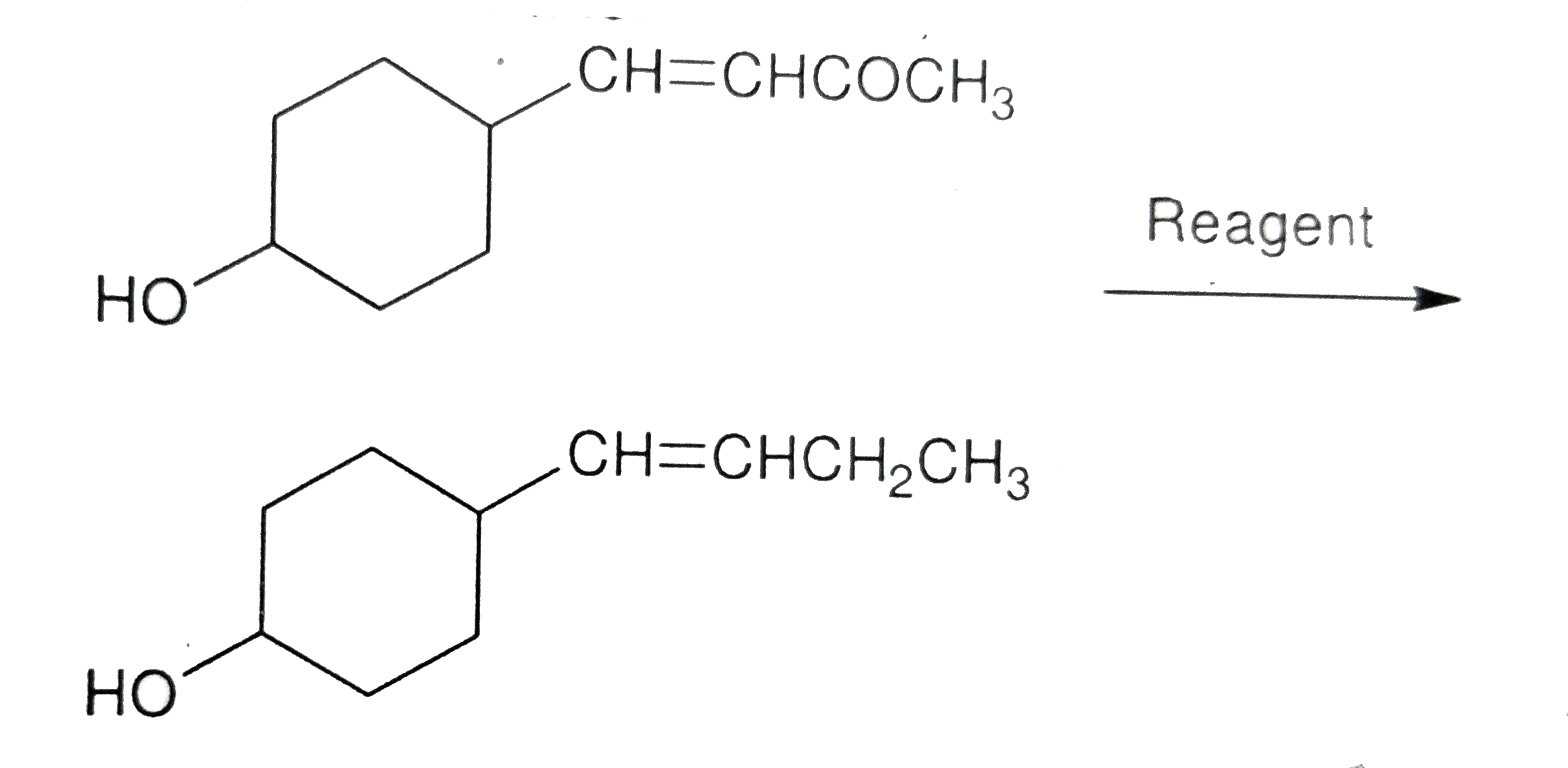Amongst the given set of reactants, the most appropriate for preparing 2∘ amine is..
2∘R−Br+NH3
2∘R−Br+NaCNfollowed byH2/Pt
R-NH2+R-CHO gives R-NH-CH2-R
None of these
The correct Answer is:C
To prepare a secondary amine from the given set of reactants, we need to analyze each option carefully.
1. Identify the Reactants:
We have four reactants to consider. We need to determine which one can lead to the formation of a secondary amine.
2. Examine the First Option (RBr + NH3):
- When RBr (an alkyl bromide) reacts with NH3 (ammonia), it will undergo nucleophilic substitution.
- The product will be RNH2 (a primary amine).
- Conclusion: This option yields a primary amine, not a secondary amine.
3. Examine the Second Option (RBr + NaCN):
- Here, RBr reacts with NaCN (sodium cyanide).
- This reaction will produce RCN (nitrile), which upon hydrolysis and reduction (H2/Pt) will yield RCH2NH2 (a primary amine).
- Conclusion: This option also yields a primary amine.
4. Examine the Third Option (RNH2 + RCHO):
- In this case, RNH2 (a primary amine) reacts with RCHO (an aldehyde).
- The reaction forms an imine (RNH=CR) initially.
- When this imine is reduced (using H2 in the presence of platinum), it yields RNH(CH3)R (a secondary amine).
- Conclusion: This option yields a secondary amine.
5. Examine the Fourth Option:
- Without specific details on the fourth option, we cannot analyze it further. However, based on the previous analysis, we have already identified a suitable option.
Final Answer:
The most appropriate reactant for preparing a secondary amine is the third option: RNH2 + RCHO.
---
We have four reactants to consider. We need to determine which one can lead to the formation of a secondary amine.
- When RBr (an alkyl bromide) reacts with NH3 (ammonia), it will undergo nucleophilic substitution.
- The product will be RNH2 (a primary amine).
- Conclusion: This option yields a primary amine, not a secondary amine.
- Here, RBr reacts with NaCN (sodium cyanide).
- This reaction will produce RCN (nitrile), which upon hydrolysis and reduction (H2/Pt) will yield RCH2NH2 (a primary amine).
- Conclusion: This option also yields a primary amine.
- In this case, RNH2 (a primary amine) reacts with RCHO (an aldehyde).
- The reaction forms an imine (RNH=CR) initially.
- When this imine is reduced (using H2 in the presence of platinum), it yields RNH(CH3)R (a secondary amine).
- Conclusion: This option yields a secondary amine.
- Without specific details on the fourth option, we cannot analyze it further. However, based on the previous analysis, we have already identified a suitable option.
The most appropriate reactant for preparing a secondary amine is the third option: RNH2 + RCHO.
Topper's Solved these Questions
- AMINESBOOK - NCERT EXEMPLAR ENGLISHCHAPTER - AMINESEXERCISE - SATQ
37 Videos
- AMINESBOOK - NCERT EXEMPLAR ENGLISHCHAPTER - AMINESEXERCISE - LONG ANSWER
3 Videos
- ALDEHYDE, KETONES AND CARBOXYLIC ACIDSBOOK - NCERT EXEMPLAR ENGLISHCHAPTER - ALDEHYDE, KETONES AND CARBOXYLIC ACIDSEXERCISE - Long Answer Type Questions
4 Videos
- BIOMOLECULES BOOK - NCERT EXEMPLAR ENGLISHCHAPTER - BIOMOLECULES EXERCISE - Long Answer Type Questions
5 Videos
Similar Questions
Knowledge Check

Which of the following sets of reagents is the most appropriate to perform the above conversion?AHlO4,ϴOH,Zn−Hz/HClBCold KMnO4,Pb(OAc)4,ϴOH,Li/NH3CO3/Me2S,ϴOH/NH3DKMnO4,ϴOH/Δ,N2H4/ϴOH,ΔThe condition that is most appropriate for electroplating with nickel:
AElectrolyte is molten copper sulphateBAnode should be made of impure nickel plateCAlternating current is usedDPeriodic replacement of cathode is needed
Match the salts in List - 1 with their most appropriate method of preparation in List - 2.

View SolutionFor life cycle of Obelia, most appropriate term used is
View SolutionAmongst the given structures , which are permissible resonance forms ?
View SolutionIn the given transformation, which of the following is the most appropriate reagent ?

View Solution . The most appropriate regent for the given reaction can be -
. The most appropriate regent for the given reaction can be -
View SolutionIn the given transformation , which of the following is the most appropriate reagent ?

View Solution
